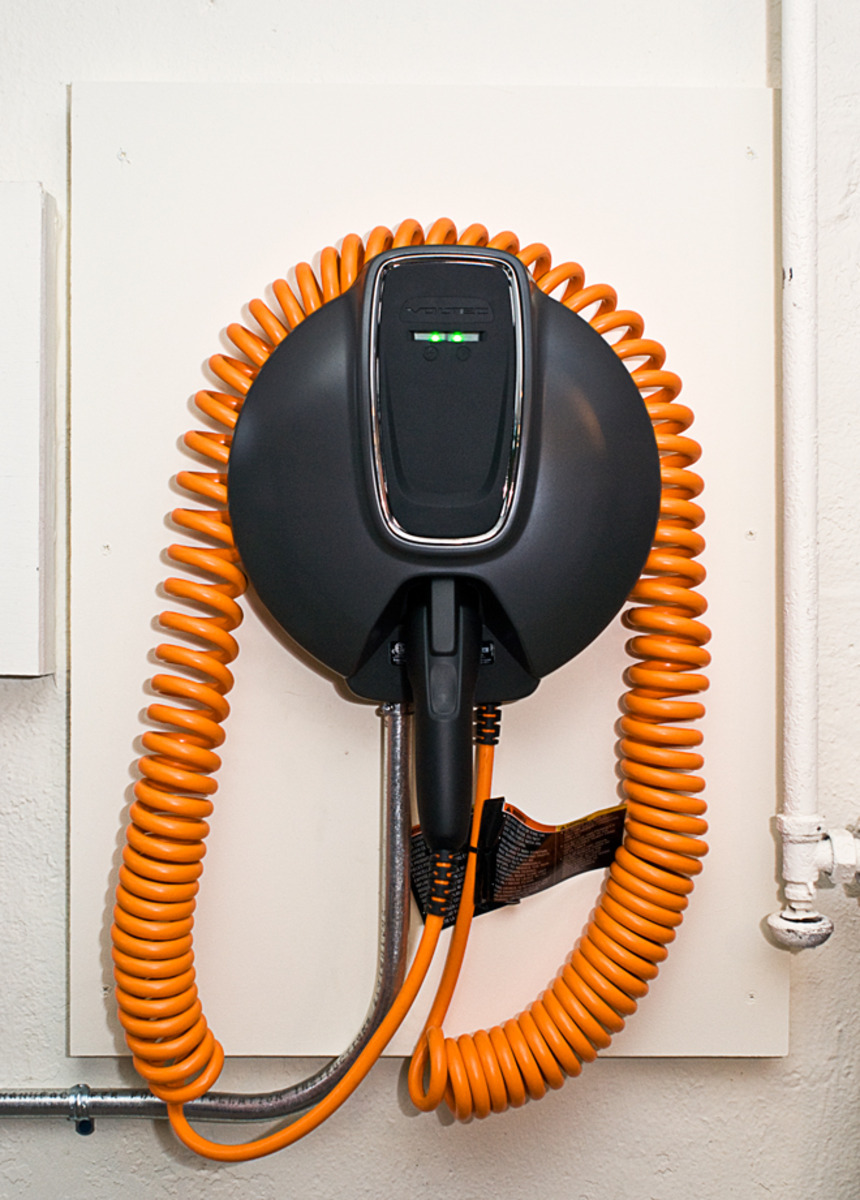We all know that once purchased, electric cars are much cheaper to run than their gasoline counterparts, but how do you make sure you’re not paying more than you need to for the privilege of charging up at home?
We’ve given it some thought and come up with five top tips to help you pay keep your domestic electricity bill low and perhaps even charge your electric car for free.
Switch Tariffs
Different states have different regulations when it comes to utility regulation, but many states now offer ‘time of use’ tariffs.

2011 Chevrolet Volt 240V charging station
Essentially, these tariffs offer consumers a much reduced night-time energy rate, meaning everything from tumble driers to dishwashers become a whole lot cheaper to run.
Since electric cars generally recharge at night, expect a major reduction in your electric car refueling cost if you can switch to time of use tariffs
Get a Second Meter
While some utilities offer a time-of-use tariff, a few even offer an electric-car tariff allowing electric car owners to have two meters installed in their home, giving even cheaper access to overnight electricity to refuel a plug-in car.
Having a second meter also allows owners to keep track of just how much of their domestic power goes into charging their car, making family budgeting a little easier.
Kill Phantoms
Our second tip doesn’t even involve the electric car, but could help provide up to 5 ‘free’ miles of power a day.

2011 Nissan Leaf and 2011 Chevy Volt, with charging station visible; photo by George Parrott
Let’s explain. An average U.S. home wastes around 50 continuous watts (or 1.2 kilowatt-hours a day) of power thanks to phantom loads: devices such as cellphone and laptop chargers, televisions and kitchen equipment which are left plugged in when not being used.
Money spent on these phantom power loads could go towards providing power for your electric car. And if you’re signed up for ‘time of use’ tariffs which give cheaper electricity rates at nighttime you may even save enough money to provide your electric car a full recharge every night.
Invest in Photovoltaic Solar Panels
On the face of it, spending extra money on buying photovoltaic solar panels for your home won’t seem like saving money. But if you plan to stay in your home for more than a few years you may end up saving money.
Even a small 2kilowatt solar array can help lower your electricity bill during the day, and free you from fluctuations in utility prices.
Those who live in states with feed-in-tariffs may even be able to sell excess power generated back to a local utility, reducing the amount of time it takes the solar cells to pay off.
If you have a large, south-facing roof you may even be able to lease your roof space in return for some free electricity from one of several solar energy companies who agree to install solar panels on your home in exchange for a percentage of the generated energy.
Charge Elsewhere
At the moment, free electric vehicle charging is a little like free wireless Internet. Many businesses will offer it and expect just your custom in return.
In other words, charge for ‘free’ away from home.
There is of course a stipulation with this, that you should only charge when you are intending to patronize somewhere which happens to have a free electric car charging point .
In other words, if your local grocery store offers free charging and you’re doing the weekly shop, filling up while you’re there isn’t an issue.
But visiting the store parking lot without buying groceries? Not cool.
Any Others?
If you already drive an electric car and have other tips to cheaply charge up why not leave suggestions in the Comments section below? We’d love to hear them.













